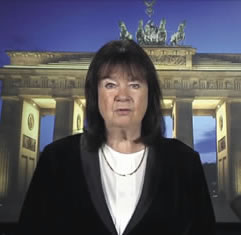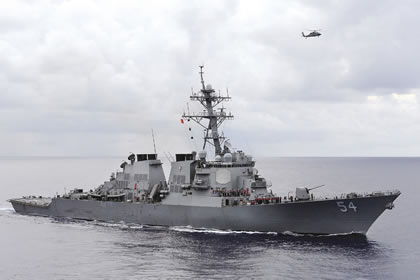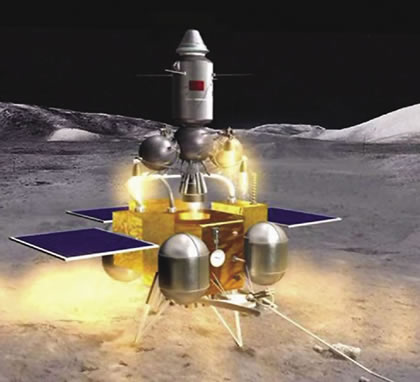The Silk Road as the
New Paradigm for All Mankind
by Helga Zepp-LaRouche
March 2016
A PDF version of this article appears in the March 4, 2016 issue of Executive Intelligence Review and is re-published here with permission.

Helga Zepp-LaRouche.. |
Mrs. Zepp-LaRouche addressed the 2016 Global Chinatown Conference Seattle Summit & Global Fortune Innovation Development Promotion Fair in Seattle on Feb. 24, sponsored by the North America China Council. She had pre-recorded these remarks on Feb. 21.
Dear Ladies and Gentlemen, dear participants in this very important conference:
I’m very happy to speak to you about the Silk Road as the New Paradigm for All of Mankind. It is the beautiful characteristic of the human being that we are, unlike the animals, not forced to walk in trodden ways, and repeat from generation to generation what was done before. But what distinguishes us from all other species on this planet, is that we can look at the situation from above, in its totality; we can analyze it, and if there is something wrong with the way things are going, we have the freedom to change it and create a new paradigm.
And the world is in a very urgent need of having a new paradigm, because if you look at the old one, what do we see? We have a new Cold War which could be transformed into a hot war at a moment’s notice. You could have a full-fledged confrontation between NATO and Russia and China, quickly developing into a new world war. The situation is characterized by many experts as more dangerous today than at the height of the Cold War, and that was the Cuban Missile Crisis.

army.mil
“NATO has a military buildup at the Russian border of a dimension not seen since 1941.” Here, NATO troops in a military exercise on June 9, 2015 in the Drawsko Pomorskie Training Area in Northwest Poland. |
NATO has a military buildup at the Russian border of a dimension not seen since 1941, when the Nazis invaded the Soviet Union. Russia is responding to that by moving its heavy military equipment to its western border, including tactical nuclear weapons. And if the Turkish crisis escalates, and Turkey moves ground troops into Syria, where there is now a little ray of hope because of the recent agreement between Secretary of State Kerry and Foreign Minister Lavrov,— but if this were to happen, and Turkey invaded Syria against the Kurdish north, you could quickly have a war between a NATO member, Turkey, and Russia.
But also, if you look at the tensions in the South China Sea and the increasing escalation around the Korean Peninsula, these situations are extremely dangerous and worrisome. If it comes at any moment to an escalation of any one of these regional conflicts, and nuclear weapons were used,— which is absolutely not impossible,— it would be the logic of such a war that it would lead to a complete and total thermonuclear exchange, which obviously would lead to the annihilation of the human species.
Financial Blowout, Refugee Crisis

U.S. Navy Photo/Mass Communication Specialist 3rd Class Declan Barnes
The Obama Administration has been escalating tension in the South China Sea. Here, guided missile destroyer USS Curtis Wilbur is underway in the Philippine Sea in 2013, as part of the Washington Carrier Strike Group, in operations in the Indo-Asia-Pacific region. |
There is a second aspect of this crisis: We are on the edge of a new blowout of the financial system, which would make the 2008 crisis pale by comparison. William White, who is the former chief economist of the Bank for International Settlements (BIS), just recently stated what is obvious: that the total outstanding debt of the world is unpayable, and that we must have, as in the Jubilee in many religions over the last 5,000 years, a complete writedown of all these unpayable debts. The alternative would be the immediate implementation of Franklin D. Roosevelt’s Glass-Steagall banking separation law. If that is not done,— and White puts it in these words,— he says: “Either it’s done in an orderly fashion, or it will come to a chaotic collapse.”
The meltdown of the financial system in slices is already going on since the beginning of the year. Market mechanisms don’t function any more, and the famous tools which were used in the 2008 crisis—quantitative easing, bail-out/bail-in, even negative interest rates— they have turned out to be not only not ineffective, but counterproductive by worsening the deflationary spiral which is now underway in the entire trans-Atlantic sector and in Japan.
The third aspect of the strategic crisis is the unprecedented refugee crisis, which emanates from mainly the Middle East, but also Africa. According to the United Nations, there are 60 million people already moving, fleeing from war and hunger, including over 5 million people from Syria alone. The director of the Davos World Economic Forum, Claus Schwab, said if we don’t change course, there will be 1 billion people coming soon from war-torn regions.
Now, I don’t want to list more aspects of this crisis, which I easily could do. But if you only consider those I mentioned, it should be clear that we have an unprecedented civilizational crisis confronting us.
The good news is that the New Paradigm already exists. In September 2013, President Xi Jinping of China declared the New Silk Road to be the official policy of China, in the tradition of the ancient Silk Road, exchanging not only goods and culture, but also technologies,— and this, he said, should be based on a “win-win” cooperation by simply expanding the Chinese economic miracle to all countries who want to cooperate.
Anyone who ever was in China will confirm that the Chinese economic miracle of the last 30 years in particular, is absolutely breathtaking. China has completed a development in 30 years, for which the industrial countries of the trans-Atlantic regions required 150 or even 200 years. China has lifted 800 million out of poverty, and the goal is to develop the western part of China to eliminate poverty by the year 2020 altogether.

Xinhua/Wang Ye
Chinese President Xi Jinping delivering a speech at the Nazarbayev University in Astana, Kazakstan, Sept. 7, 2013, announcing the Silk Road policy. The New Silk Road Project is becoming the largest development scheme ever, with an envisioned $600 billion in investments. Sixty countries are already cooperating in it. |
The New Silk Road project is already becoming the largest development scheme ever, on this Earth. Already $600 billion in investments are envisioned, with the Chinese intending to invest $1 trillion equivalent in the next years in other countries. In the two and a half years since Xi Jinping announced the New Silk Road, it is developing with breathtaking speed: Sixty countries are already cooperating in it. Since January 16, the Asian Infrastructure Investment Bank (AIIB) has started to function in Beijing, providing credits to countries that require them. So they have launched construction projects, including the transcontinental railway from Yiwu and Chongqing to Europe with the cooperation of the countries along the way; they’re building the Greek port of Piraeus, and the Jakarta-Bandung high-speed railway. The first cargo train just arrived on Feb. 15, from Yiwu to Tehran, with 32 containers, which was the result of Xi Jinping’s visit to Iran earlier.
In 2015, China invested in 49 countries along the “One Belt, One Road” New Silk Road. It invested, according to the Commerce Ministry, $14.8 billion, in 3,987 projects! It has in contracts with 60 countries. All these projects will have tremendous economic benefits during this year, during 2016, and therefore, the narrative that it is the Chinese “slowdown” which is responsible for the tumult in the trans-Atlantic sector is completely nonsensical.
President Xi Jinping offered at the APEC meeting in October 2014, to President Obama, cooperation between China and the United States on the basis of such a “win-win” perspective. And that is the solution.
Why are we, then, on the verge of World War III?
Our Proposal of 1991
We have to go back to ’91, at the time of the collapse of the Soviet Union, because at that time, there was the real chance to develop the peace order for the Twenty-first Century. But, it was missed. There was the possibility, because the enemy,— Communism, the Soviet Union,— had disappeared—but it was not taken. The Schiller Institute, however, at that point, made a proposal which we called the Eurasian Land-Bridge, the New Silk Road, which was the idea of connecting the population and industrial centers of Europe with those of Asia through “development corridors,” and in this way, uplift the productivity of all the landlocked areas of the Eurasian continent.
We proposed this. It would have been the basis for a peace order, and we have campaigned for this in the 25 years since, in hundreds of conferences and seminars. And therefore, we were very happy when it finally was put on the agenda by Xi Jinping.
Now, despite promises at that time not to extend NATO to the borders of Russia, which was testified to many times by the former American ambassador to Moscow, Jack Matlock,— unfortunately what dominated at that point was the Wolfowitz-Cheney doctrine, which was the idea that, okay, now the United States is the only superpower left, and it must be guaranteed that never will a country or a group of countries be able to challenge that status of the United States, as the only superpower.
The development of the last 25 years also demonstrates very clearly that this is not the reality, that you have emerging countries, especially China, and also India, who are rising; you have Russia regaining its military strength. And therefore, the idea that a unipolar world is possible, is simply not realistic.
However, a multipolar world is also not the solution, because the idea of a multipolar world still remains in the geometry of geopolitics, and it was that geopolitics which was the cause for two world wars of the 20th Century.
We are therefore in need of a new paradigm which overcomes geopolitics from a higher order. Nikolaus of Cusa, the eminent thinker of the 15th Century, basically defined that solutions which are real solutions can never be partial, heterogenic solutions, but must address the commonality of the problem by the method of the coincidentia oppositorum, the coincidence of opposites. It’s the principle that the One has a higher order of magnitude than the Many, and that it is possible on a higher level of reason to conceptualize a solution in which the contradictions of the lower level never exist.
One can create a new paradigm which is exactly of the dimension of the paradigm-shift from the Middle Ages, which was dominated by scholasticism, by the Peripatetics, by the Aristotelian idea that a thing can not be A and not-A, or that there is always a contradiction between A and B.
So this change, which Nikolaus of Cusa introduced by this new method of thinking, led to modern natural science, Classical art, the new role of the individual, and everything that has proven human creativity to be the driving force in the physical universe through a limitless possibility of inventions and discovery of new physical principles.
It is exactly such a fundamental paradigm shift, like that which divides the Middle Ages from modern times, which is required today. We have to make the evolutionary jump, from geopolitics to the common aims of mankind. And obviously this requires a vision of where should mankind be in 100 years, 1,000 years, or even 10,000 years from now? If one considers the enormous progress mankind has made in the last 10,000 years, from Stone Age conditions to today being able to communicate with little “smart phones” in conferences in which you can see your partners all over the world,— just to mention one little example,— should we not be able to solve the problems of mankind on a completely different level?
Should we not be able to pull back from the brink of thermonuclear war and join hands and solve the problem of war, hunger, and terrorism? When President Xi was recently in Southwest Asia, in Saudi Arabia, Egypt, and Iran, he offered the expansion of the New Silk Road, the One Belt, One Road policy, as a Noah’s Ark for the refugee crisis.
The Common Aims of Mankind
The Schiller Institute already in 2012 had convened a conference in Frankfurt, Germany, where we presented a comprehensive plan to develop the entire Middle East from Afghanistan to the Mediterranean, from the Caucasus to the Persian Gulf, and to have real economic development for this region as a perspective to overcome poverty, war, and the grounds for the recruitment to terrorism! It was the idea of declaring a “war on the desert” by developing new, huge amounts of clean water through the desalination of ocean water with the help of nuclear energy, and by tapping into the moisture of the atmosphere through ionization; of developing new agriculture and forestry, of developing infrastructure, linking the new cities which have to be built, so that the entire region becomes one of the prosperous, beautiful regions of the world.
Such a perspective, naturally, is easy. It would be very easy if Russia, China, India, Iran, and Egypt, and European nations, such as Italy, Germany, and France, joined hands, and hopefully would even get the United States to cooperate, to together develop this region. And this is the only way that we can end the refugee crisis, by developing that part of the world, and naturally, also Africa.
And it would be very, very easy, with what you could call a “Silk Road Marshall Plan” and a “win-win” perspective.
Some of the common aims of mankind are also within reach in the not so distant future. For example, we can reach energy and raw-materials security: This would be possible through the realization of thermonuclear fusion power, which is now very, very close. Recently, there were two breakthroughs: One in Germany in Greifswald, where the Wendelstein 7-X Stellarator test reactor was able, for one-tenth of a second, to heat plasma to several million degrees. And the goal in Greifswald is to have a 30-minute stable plasma by 2020.
The same day, reports were coming from the Institute for Plasma Physics in Hebei, a province near Beijing, that the experiment with the the Experimental Advanced Superconducting Tokamak (EAST) reactor, was able to maintain a plasma for 102 seconds at 50 million degrees, which is half what is necessary for fusion of deuterium and tritium, and they have the goal of reaching a plasma of 100 million degrees temperature, in a stable condition. The results of this EAST experiment will be applied at ITER in France, at the joint international project.
Fusion power will give the world power and energy security and raw materials security, because with the accompanying fusion torch procedure, you can basically transform all waste into new isotopes, and create new raw materials!
The second generation of fusion power is already part of the Chinese lunar mission Chang’e-5, which will go into orbit in 2017. It’s designed to bring back the first samples of fusion-ready helium-3 as a preparation for the future industrial exploitation of the Moon. Helium-3 as a fuel will also mean a new revolution in energy generation, because it will be possible to convert its energy directly into electricity at much higher efficiency levels; it will also revolutionize space travel as a fuel.

CCTV
Fusion power will give the world power and energy security and raw materials security. The second generation of fusion power is already part of the Chinese lunar mission Chang’e-5. Artist’s conception of the Chang’e-5 lunar sample return vehicle is shown here. |
One of the most exciting common aims of mankind is space research in general. The Chinese converted the Chang’e-4 lunar mission, which was designed to be the backup for the very successful Chang’e-3, into a landing mission on the so-called “dark side of the Moon,” for 2018: This will be the first time mankind has placed an object on the far side of the Moon. It will enable China to have a large radio telescope where the Moon, on the far side, is shielded from radio interference from Earth,— and that part of the Moon also has the highest concentration of helium-3.
But even more important, it will give mankind for the first time, a much deeper insight into the Solar system and beyond, and into our Galaxy, and the many galaxies out there.
So therefore, let the United States join the Silk Road. The United States is in urgent need of modernizing its infrastructure. The United States probably needs 50,000 miles of high-speed rail, of which China has already built 20,000 and wants to have 50,000 by the year 2020. The United States could also very well have new, beautiful cities, new fresh water to fight the drought in the Southwest; the United States should revive NASA, and it would be very easy to convert that part of production which is now used for military purposes, to convert it into other high-technology areas.
And if the United States joined the Silk Road, the United States—we—could develop all of South America, Central America, and in that way, halt the refugee crisis at the southern border of the United States; there are presently 11 million illegal immigrants in the United States, and probably the same number in desperate condition south of the border.
Mankind is at an extremely important crossroads in its existence, and we have to elevate our thinking to a much higher level if our species is to continue to exist. Let us therefore revive the American dream; let us build the New Silk Road into a World Land-Bridge, which we have proposed as a study, which really gives a blueprint for every part of the world to develop.
Let’s revive the American dream and join with the Chinese dream to become the dream of all mankind.
